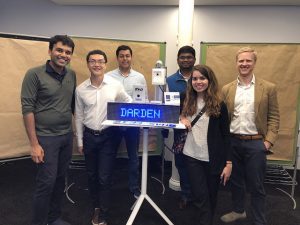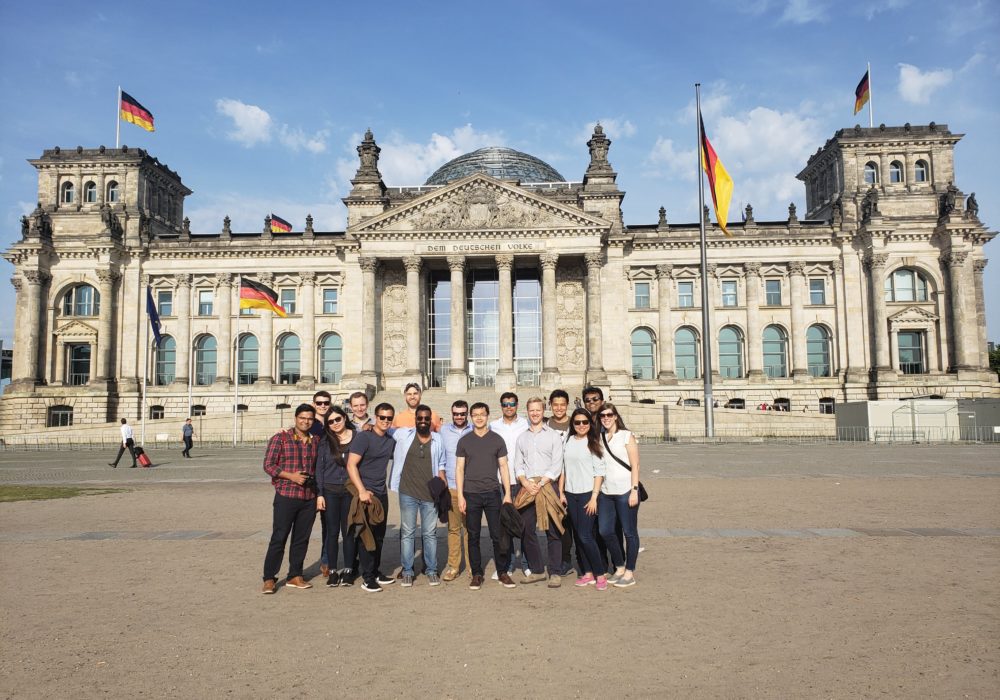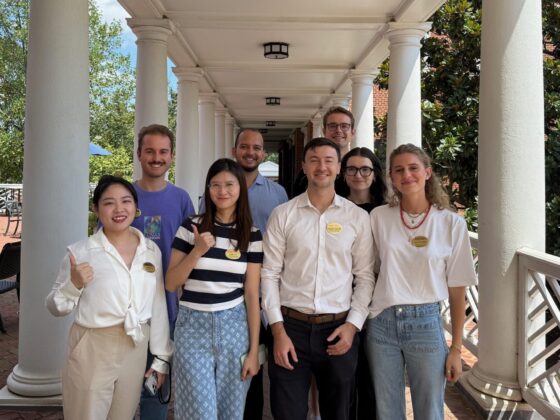After graduating from UC Berkeley, Aniket Patil worked at a Silicon Valley startup and with Deloitte where he helped develop services related to the Patient Protection and Affordable Care Act. He is deeply interested in how business interacts with new technology and public policy. At Darden, he is the Vice President of Technology for the Consulting Club, Chief of Staff for the Business and Public Policy Club, and a Tri-Sector Leadership Fellow. In his own words:
Drawn by a course title of Artificial Intelligence and Technological Unemployment, I signed up for the Darden Worldwide Course to Germany with apprehension. Would visiting companies on the cutting-edge of technology prove that the future would be shaped more by robots rather than by people? Doom and gloom didn’t seem like a fun precursor to a summer internship and final year of B-school.
Having worked internationally before Darden, I knew that studying new technologies overseas would help me separate modern realities from mere cultural assumptions. Through conversations with technologists during the DWC to Germany, I came to appreciate just how much of an impact decision-making by business leaders will have on placing people at the center of an automated future.
People-Centered Automation
In Hamburg, we visited the Port of Hamburg and an Amazon fulfillment warehouse. While both facilities were impressive in their own right, each took a unique approach to ensure people remained integral to the overall function of an otherwise fully-automated facility. At the Port of Hamburg, One of the terminals is fully automated, replete with self-driving trucks, automated cranes, and massive robots diligently rearranging shipping containers. And yet, while technical innovation has completely transformed this warehouse, the difficulties of societal changes keeping pace with technological change are evident: local traffic laws required that self-driving cars operating in a human-free environment must still use turn signals, and union contracts required that union members control the first and final meter of transport for the fully autonomous cranes. The port leaders voiced frustration, pointing out how rules designed to keep humans involved put them at a competitive disadvantage versus nearby ports.
The Amazon warehouse takes a different approach, deploying robotics selectively (at least for now) to complement workers. Workers retain the responsibility of handling products, but can work more efficiently by utilizing robots to bring shelves of products to them – eliminating walking or movement time almost entirely. Despite these measures minimizing the labor-intensive aspects of the process, we learned that the facility continues to hire more and more employees while fulfilling a staggering amount of orders each week. The nature of the job and the skills required to complete the work have changed for these employees, but there is more work and more hiring than ever.
Education in a Land of Robots
To help train its young people, Germany uses a variety of programs and norms that I found really interesting. We visited Duale Hochschule Baden-Württemberg, a university where students applied not to the university but rather to companies. If accepted, the students received a tuition-free education and alternated between academic studies and an internship with their employer every six weeks, all while receiving a paycheck. The state pays for the education and the employer provides practical, real-world experience.
Even among more traditional schools, working students are a well-established norm. Nearly all the companies we visited had sizable portions of their workforce set aside for students, with expectations adjusted to account for concurrent studies. In my own experience, my job during college was unrelated to my field of study. Students in Germany, however, had access to a wide breadth of opportunities with employers experienced in training current students in areas of growing interest and relevance to the student body.
Bold, but Thoughtful
Both professionally and culturally, Germany seems open to experimentation and reinvention. We spent the final few nights in Berlin, the center of Germany’s startup scene. We met founders experimenting with different approaches to building privacy-sensitive AI systems. We met students experimenting with machine vision technologies to combat urban congestion. But we also saw reinvention elsewhere too: portions of the Berlin Wall remade into countercultural art galleries, and old Soviet-build mansions repurposed into nightclubs.
I can’t say whether the German apprenticeship model will serve Germany well through the rise of automation and AI. But I can say that Germany is broadly committed to experimenting and building a pragmatic system that works to both embrace automation in a thoughtful way and to ensure that all of its citizens are able to develop the in-demand skills they will need in the years ahead.
Back in the United States, I worked with technology clients in the Bay Area during my consulting summer internship. By drawing on examples from the DWC to Germany, I helped my client reframe how a new technology could be used at the company without stoking anxiety among employees. As more and more industries adapt to these new technologies, I’m glad to be able to draw on my DWC experiences and provide more thoughtful guidance to my clients.





